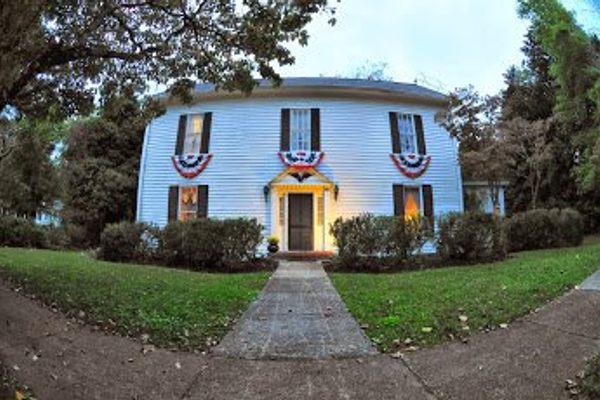Some Bald Cypress Trees in This North Carolina Swamp Are Older Than Cleopatra
New research suggests that Black River’s gnarled conifers are even more ancient than we thought.

Black River, which meanders several dozen miles through North Carolina before flowing into the Cape Fear River, near Wilmington, feels ancient, even prehistoric. The water is the color of steeped tea, and it laps against the thick buttresses of bald cypress trees. It looks as though the leafy, stumpy background of a natural history museum diorama has shaken off its paint and jolted to life.
Some of those trees have stood along the banks for thousands of years—and in a new paper in Environmental Research Communications, a team of researchers uses core samples to suggest that they have been around even longer than previously documented.
It was no secret that the swamp was home to very old trees: As a species, bald cypresses are the longest-living wetland trees, the authors write, and at Black River in particular, one dubbed BLK69 and affectionately called Methuselah had been dated to the year 364. But the team suspected that they could find even-more-ancient ones. Because they were hunting for the most senior of the leafy citizens, the researchers selectively sampled specimens that seemed likely to be old. There’s no single visual litmus test for a tree’s age, but in addition to diameter, the team put some stock in “gnarl factor”—the burls and the buttresses, the hollow slits, heavy limbs, and broken branches that all point to advanced years. “People don’t hide their age well, usually, and neither do super old trees,” says David Stahle, a geoscientist at the University of Arkansas and lead author of the paper.

A core sample of the bald cypress called BLK227 pushed the timeline back even further. The team dated the innermost ring to 605 BC. (Radiocarbon dating on a core fragment placed the age between 548-600 BC.) Either dating method places the tree in this environment hundreds of years before Cleopatra ruled Egypt. The inner ring of another of the area’s ancient trees, dubbed BLK232, dates to 70 BC, one year before the pharaoh’s birth.
The scientists aren’t just scouting old trees for the fun of it: They’re championing dendrochronology, treating trees’ rings as a library holding records of the distant past. The striated samples hold proof of historic precipitation and temperature swings—and so the more rings, the longer the potential record, and the deeper the glimpse into the past, says Stahle. “The older, the better.”
These oldest trees tend to cluster in pockets, Stahle says, but it’s likely that the team still hasn’t pinpointed the most senior of them. For one thing, the watershed is a sprawling place, and they haven’t explored it all. They’ve cored 110 living trees, out of tens of thousands in the wetlands, and choosing which to sample can be tricky. “The easiest thing is to start upstream and float downstream,” Stahle says, “but the channel’s narrow and the floodplains are broad, and there’s stuff you can’t see.” Sometimes the landscape is too inundated to navigate; other times, researchers spy trees that look good and gnarled—promisingly old—but when they clamber on the buttresses or scale a little ladder and knock on the trunk with a hammer to determine where to bore, they find that the giants are too hollow to offer a full core sample.

The research, partly funded by the Nature Conservancy, is also a call for conservation. “If the true antiquity of bald cypress can be documented then the very presence of exceptionally old living trees could help promote public and private conservation efforts in the Black River watershed,” the authors write. In 2018, the North Carolina Division of Parks and Recreation concluded that “the conservation and protection of other large tracts along the Black River would be beneficial,” because the cypress swamps and other wildlife passed muster as “state and federally significant features.” The department recommended that residents of a few local counties continue to mull over the idea of designating a portion of the river as a state park.
Meanwhile, Stahle thinks the place with the chomped-looking trunks and old branches—green in the summer, when the landscape is dotted with spider lilies, rust-colored come autumn, and bare in the winter—is worth a visit. “Midsummer can get a little oppressively hot and humid, but shoulder seasons can be delightful,” Stahle says. “It’s a reverential experience to be in an undisturbed old growth forest. These things are precious.”
























Follow us on Twitter to get the latest on the world's hidden wonders.
Like us on Facebook to get the latest on the world's hidden wonders.
Follow us on Twitter Like us on Facebook